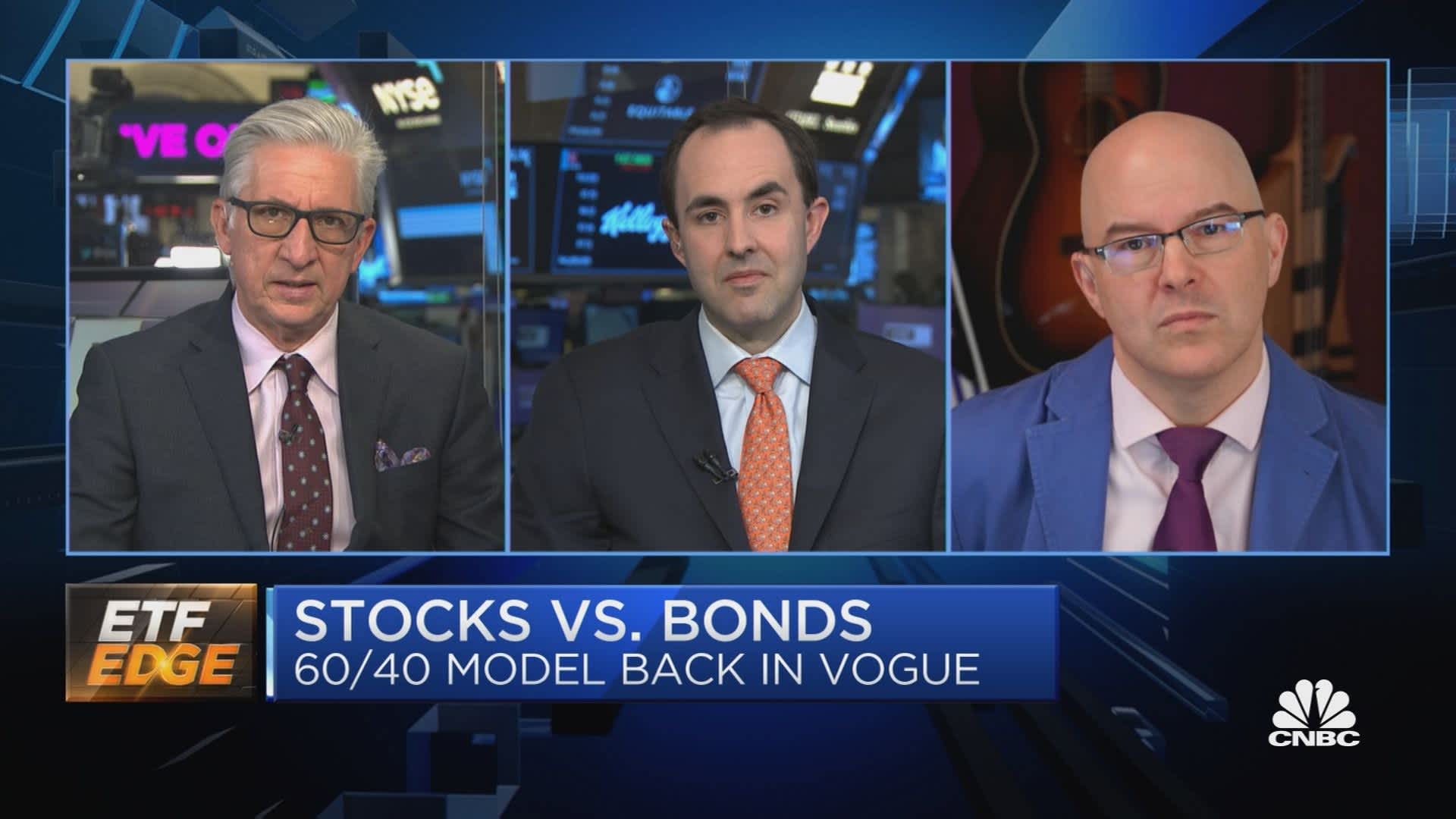
As short maturity Treasury bond ETFs see big inflows, more investors are taking on single-bond strategies as a solution to macroeconomic challenges.
Buying Treasury bonds typically involves opening an account on TreasuryDirect or through brokerage firms like Charles Schwab. But Dave Nadig, financial futurist at VettaFi, said this can often be complicated.
“It’s not the case that you can just simply click a button, get the exposure of the headline rate that you’re reading in The Wall Street Journal or seeing on CNBC,” Nadig told Bob Pisani on CNBC’s “ETF Edge” on Monday. “[And if] you want to do something like rebalance on the 15th of the month, now you got a whole ‘nother world of pain.”
TreasuryDirect and brokerage firms list all of the CUSIPs, which identify financial instruments, currently at auction. Nadig noted these can include a range of products from the last on-the-run zero-coupon bond published last month to a 15-year note that is now expiring.
Dealing with this large number of products makes investors more prone to error when trying to do rebalances or allocations of individual dollar amounts, he said.
“All of those things make it inconvenient and often more expensive than just buying a 15 to 20 basis point ETF that’s going to do it for you,” Nadig added.
When seeking to invest in short-term Treasury bonds, Nadig advised looking for ETF products like this or a competitor’s ETF products that offer similar kinds of exposure.
On Friday, the 2 Year Treasury (US2Y) yield fell by more than 4 basis points to 4.86%, but returns have still increased 43 basis points this year. The 6 Month Treasury (US6M) currently holds the highest yield at 5.137% as of Friday’s close.
Bond ETF products on the rise
F/m Investments — a $4 billion multi-boutique investment advisor — is preparing to launch six new single-bond ETFs, the firm’s CIO Alex Morris revealed during the segment on Monday.
“You’ll see the 6-month, 3-year, 5-year, 7-year, 20-year and 30-year come out,” he said.
The firm first launched three single-bond ETFs back in August — the US Treasury 10 Year ETF (UTEN), US Treasury 2 Year ETF (UTWO), and US Treasury 3 Month Bill ETF (TBIL). Morris mentioned a rise in demand for the ETFs led the firm to develop a wider array of offerings.
“Folks have asked us to give them a full rates toolset,” he said. “So, when the yield curve shifts, they can shift along with it. We’re going to give the people what they’ve asked for.”
More single-bond ETF product offerings allow investors to further diversify their portfolios. Nadig explained this diversification minimizes risk exposure to single-issue blowups, such as a Treasury bond getting repriced or an earnings recession.
“You don’t want to have all your eggs in one basket, [and] bonds have always traditionally been that zagging diversifier when equities zig,” he said.
But Nadig pointed out that assessing one’s stock/bond ratio isn’t the only opportunity here for investors to capitalize on.
“This is a fantastic opportunity for folks … [to] consider the role of other counter correlated assets they may have,” he said. “Whether that’s the equity in their home or a managed futures product.”








